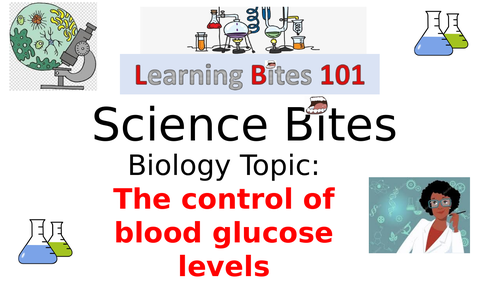

**Based on AQA biology specification ( can be used for revision). Includes: Content, AFL Questions, Exam style Questions and Answers
**
Based on AQA biology specification
Blood glucose concentration is monitored and controlled by the
pancreas.
If the blood glucose concentration is too high, the pancreas produces
the hormone insulin that causes glucose to move from the blood into the
cells. In liver and muscle cells excess glucose is converted to glycogen
for storage.
Students should be able to explain how insulin controls blood glucose
(sugar) levels in the body.
Type 1 diabetes is a disorder in which the pancreas fails to produce
sufficient insulin. It is characterised by uncontrolled high blood glucose
levels and is normally treated with insulin injections.
In Type 2 diabetes the body cells no longer respond to insulin produced
by the pancreas. A carbohydrate controlled diet and an exercise regime
are common treatments.
Obesity is a risk factor for Type 2 diabetes.
Students should be able to compare Type 1 and Type 2 diabetes and
explain how they can be treated.
(HT only) If the blood glucose concentration is too low, the pancreas
produces the hormone glucagon that causes glycogen to be converted
into glucose and released into the blood.
(HT only) Students should be able to explain how glucagon interacts
with insulin in a negative feedback cycle to control blood glucose (sugar)
levels in the body
Something went wrong, please try again later.
This resource hasn't been reviewed yet
To ensure quality for our reviews, only customers who have purchased this resource can review it
Report this resourceto let us know if it violates our terms and conditions.
Our customer service team will review your report and will be in touch.